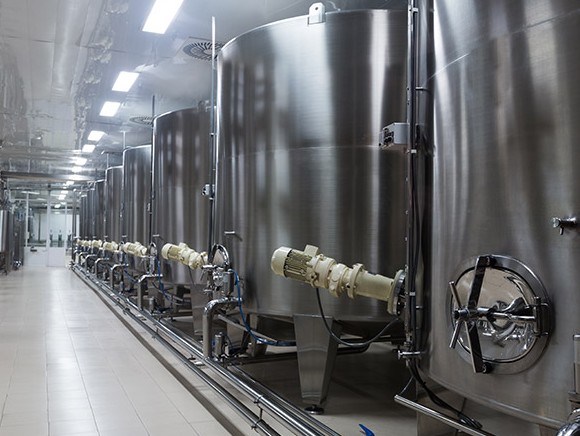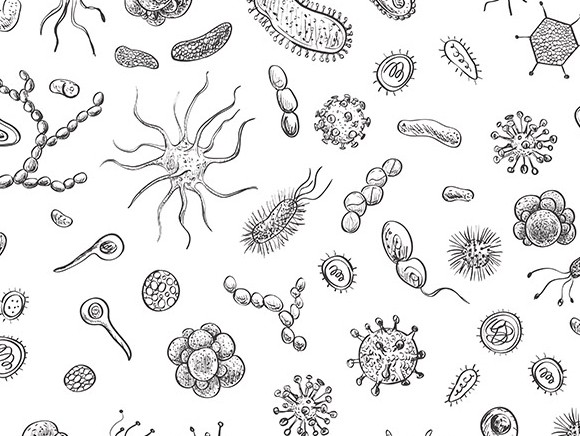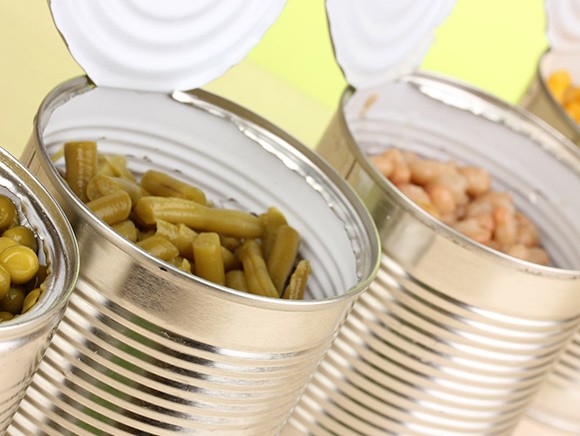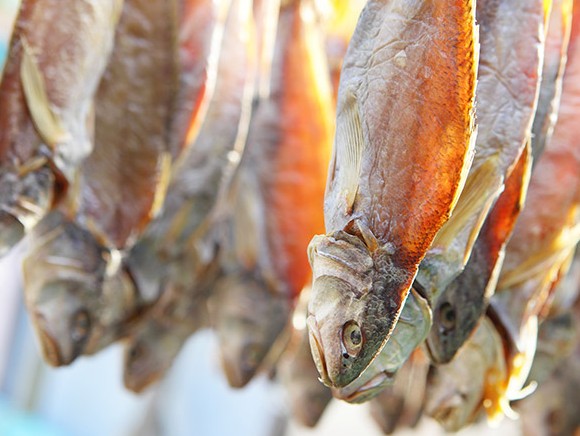
The discovery that food could be preserved for long periods of time was truly revolutionary! It enabled humans to travel and to survive harsh winters and food shortages. Heating, freezing, drying, pickling, fermenting and preserving are all techniques that date back to ancient times...and progress continues to be made to this day.
The underlying idea of food preservation is simple: how can you inactivate or render harmless the microorganisms that cause decay, so that both the nutritional value and the organic and physical properties of the product (texture, smell, colour, flavour, etc.) are retained as much as possible?
The execution of that idea has become ever-more complex over the years. Food manufacturing companies face substantial challenges. Buying behaviour statistics reveal that consumers increasingly prefer products that are not only of high quality, healthy and have a long shelf life, but have also undergone minimal processing. Moreover, they should contain no or very few preservatives or other additives to extend their shelf life. Plus they must have been produced sustainably and – needless to say – food safety must be guaranteed. Achieving all that is no mean feat.
While food preservation has been essential for human survival since ancient times, it will become even more important in the near future. Demographists predict that the world population will approximately double over the next 20 years. A lot of good food is currently wasted due to spoilage. This needs to change. Moreover, improvements in preservation techniques will also help to save energy and water consumption. To meet these requirements, researchers are working hard to develop new, milder preservation techniques and to improve existing ones.
The causes of food spoilage can be divided into three main groups:
a. Biological spoilage. This occurs in any product that lives, grows and ripens, which can be infested by worms or maggots, and where spoilage is caused by the uncontrolled multiplication of microorganisms such as bacteria, yeasts, moulds or viruses.
b. Chemical spoilage. This can result from the loss of water from products (decomposition) or from a reaction with oxygen. If oil is exposed to air it will oxidise, resulting in changes to the smell, colour and flavour.
c. Physical spoilage. This occurs under the influence of light and warmth or due to the presence of enzymes. When peeled, an apple turns brown due to polyphenol oxidase when it comes into contact with oxygen.
Preservation techniques can also be categorised as follows:
Thermal and non-thermal preservation, biopreservation, physical-chemical preservation and packaging-based preservation.

It is possible to distinguish between classic and innovative thermal preservation.
Classic thermal preservation entails adding the heat from the outside via convection, conduction or radiation heat. Examples include steam, hot air or infrared heat. In the case of the innovative thermal technique, the product itself generates the heat aided by electrical resistance or electromagnetic energy. Examples include ohmic heating, microwaves or radio-frequency radiation. Microorganisms are rendered inactive by the heat in all cases, but the heat is disseminated throughout the foodstuff much more quickly in the internal heat-generation techniques than in classic thermal preservation. Harmful processes such as the Maillard reaction or loss of vitamin content are significantly reduced compared to when the classic techniques are used.
Major advancements have been achieved in the field of non-thermal preservation in recent decades and various methods are already in use in the industry: ultra-high hydrostatic pressure (UHP); pulsed power processes [pulsed electric fields (PEF), high-intensity light (HIL) and oscillating magnetic field (OMF)] and irradiation [electron beam (e-beam) irradiation, gamma rays and ultraviolet light (UV radiation)] and cold plasma.
In the case of UHP preservation, the product is exposed to high hydrostatic pressure. Pasteurisation requires pressure of between 300 and 600 MPa, while in the case of sterilisation processes the pressure can reach 1,000 MPa or more. The preservative effect is achieved by volumetric changes in the product caused by the pressure, in combination with a change in the pH and the resulting effect on the enzymes. It is not yet possible to achieve this in a continuous process, although the UHP technique is already used for pre-packed products such as fruit, vegetable puree, salmon and steak tartare.
Pulsed electric field (PEF) processing entails passing short, high-voltage pulses through the product. The pulses are generated by creating a charge in the capacitors and then releasing the energy into the foodstuff in a fraction of a second. This causes such extensive damage to (among other things) the outer membranes of the microorganisms that they are beyond repair. Laboratory research has shown a more than 5-log-unit inactivation of Listeria and Eschericha coli, for example, at a temperature of below 37C.

In the case of the high intensity light (HIL) preservation technique, the surface of the product is exposed to light energy that varies between 0 and 12 J/cm2, for a pulse duration of between 100 s and just a few microseconds. The number of light pulses is between 1 and 20. This preservation method is suitable for the treatment of transparent liquids, and it can also be used to decontaminate smooth surfaces. However HIL has only a very small effect on carcasses, for example; the relatively large amount of ‘shadow’ in a carcass means that this method does not ‘hit’ the microorganisms. As a result, it takes multiple flashes to damage the DNA of the microorganisms.
Advancements in the field of electron beam (e-beam) irradiation technology could lead to a breakthrough in the near future. This technology is based on the generation of a beam of high-energy electrons in an electron accelerator. The beam is directed at the product to be treated. The electrons form radicals in the product which damage the DNA structure of microorganisms. This method eliminates both pathogenic bacteria and microorganisms that cause spoilage. The effects of e-beam treatment are comparable to those of gamma rays caused by radioactive isotopes, such as those used in the more conventional irradiation techniques. Both techniques are covered by the Dutch Food & Drugs Act Relative to Irradiated Food (Warenwetbesluit Doorstraalde Waren), which stipulates that approval must be obtained from the Ministry of Public Health, Welfare and Sport per product type. The maximum permissible dose of irradiation is 10 kGy.
One advantage of the e-beam technology over conventional irradiation techniques is that it does not use radioactive sources; the required energy is generated on the spot, enabling in-line treatment of products in a production environment. However, there is also a limitation: e-beam has a shallow penetration depth. Therefore, in view of the legally permitted maximum energy level of 10 MeV, it is only suitable for products with a thickness of between 3.5 and 7 cm – although this makes it more than sufficient for hamburgers.
The Directive 1999/2/EC on the treatment of food with ionising radiation, which came into force on 22 February 1999, states that products such as herbs, spices, shellfish and poultry may be irradiated. The use of gamma irradiation, which is recommended by FAO/WHO, eliminates the pathogenic microorganisms such as Campylobacter, Salmonella and E. Coli at 1 to 2 kGy.
A third option is to use ultraviolet (UV) light. This method is primarily used to disinfect surfaces. By law, UV light may not be applied directly to meat – because of its shallow penetration depth, for one reason, but also because meat generally contains fat and UV treatment would cause the fat to turn rancid.
Biopreservation is a method of extending the shelf life of food using substances that are created by microorganisms, such as in the case of fermentation in which antimicrobials are produced such as lactic acid, acetic acid and propionic acid, diacetyl, hydrogen peroxide and bacteriocins (the best-known of which is nisin). These substances can also be added to foodstuffs, in which case they have the same effect as when they are produced during fermentation.
Physical-chemical preservation covers the whole spectrum of measures which either delay the growth of microorganisms and spore germination or increase the sensitivity of the spores to inactivating treatment.
Substances that have a delaying effect include, for example, the organic acids, bioactive peptides, sugar esters, lactoferrins, bacteria-inhibiting plant extracts and bacteria-inhibiting polymers such as chitosan and oxidised carbohydrates. Substances that can sensitise bacterial spores include, for example, chelating agents (e.g. sodium lactate, citrate and acetate), EDTA or polyphosphate, the bacteriolytic enzyme lysozyme, and agents that induce spore germination (such as L-alanine and L-cysteine). Chelators are also able to sensitise gram-negative bacteria to bacteriocins.
Packaging-based preservation entails food products being packaged under vacuum or in a modified atmosphere(gas mixture of CO2 / O2 / N2). New types of packaging are being developed all the time that actively contribute to extending a product’s shelf life. Such packaging emits substances such as antimicrobials (bacteriocins or organic acids), antioxidants (BHA and BHT) or photosensitisers (molecules that make microorganisms sensitive to light). Another growing application is to ‘deplete’ undesirable substances such as oxygen.

Before you decide which preservation technique to use, first think carefully about which type of spoilage (physical, type of microbiological spoilage) you need to combat in your product, and then choose the right method to meet your needs.
Source: Illustratie: ©Prokhorovich/Shutterstock.com, fermentatieketels: ©Iakov Filimonov/Shutterstock.com, gedroogde vissen: ©leungchopan/Shutterstock.com, blikken: ©Africa Studio/Shutterstock.com